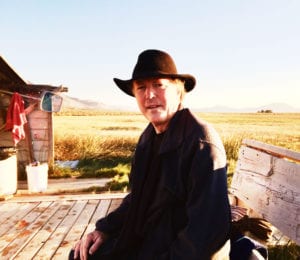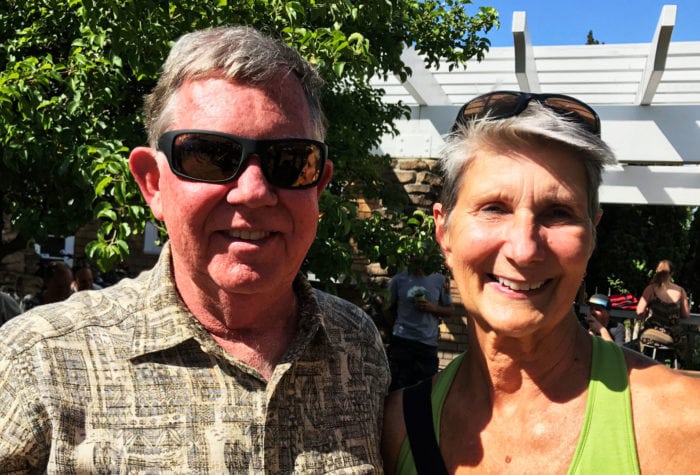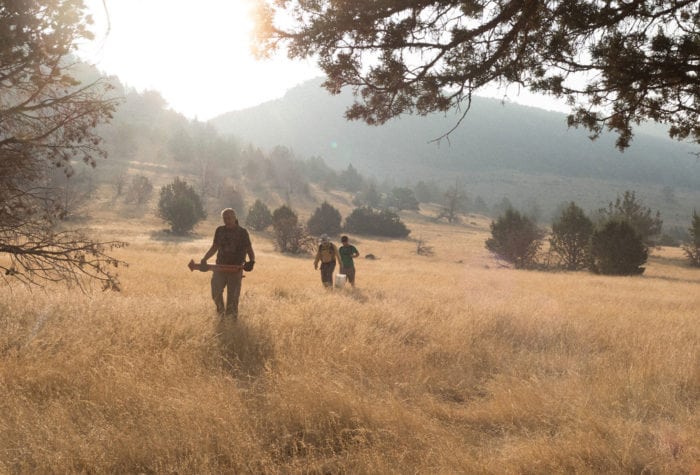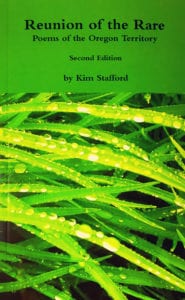Rumor has it that your parents would encourage their children to experience the natural world and wild places by dropping you and your siblings off with a ‘See you in a week’ and a wave. Is that an accurate depiction? Did they ever leave you out in Oregon’s high desert?
As kids, we were inspired by our father’s account of his own father dropping him off in the dry country of eastern Colorado in the 1920s, leaving him to tramp and camp his way through the perennially mysterious landscape. So, one time, our dad dropped me off at the old Cove Palisades State Park, before the Round Butte Dam flooded the canyons of the Crooked, Deschutes, and Metolius rivers. Over the next several days, I hiked and camped my way across open country to be picked up below Lower Bridge on the Metolius. In that country, it felt like Eden to be there alone without a map, but following the sun west through juniper and sage.
Can you give an example of how your early encounters with wilderness shaped your adult life or your career?
One time we were camping near Fort Rock with I was twelve or so. I rose in the dark to ramble up into a place called Devil’s Playground, a broken landscape of lava outcrops and protected enclaves of wildflowers, rabbits, singing birds, bones, animal tracks, and myriad other pleasures of the wild. It was experiences like this that gouged out a channel in my soul, so that in adult life any shred of wild existence strikes a tuning fork in my soul, and brings me joy.
In November 2016, you published The Flavor of Unity, a collection of post-election poems. What are your thoughts about the intersection of poetry and politics now?
As a friend told me recently, we have two things: a Vote, and a Voice. The vote is very important, but it is finite, a number to be counted. But the voice can grow, deepen, reach across divides to seek reconciliation on behalf of polarized issues. Because poetry can be short, evocative, and generous with new perspectives, it has an essential role to play in our divided political landscape.
Do you have a favorite spot in Oregon’s high desert for a wintertime visit? In spring?
In winter it has to be Fort Rock where the air is cold and ancient, the vistas crisp, and the silence deliciously deep, but for the whisk of a raven’s wings along the cliff’s crest. In spring, as far up as I can get on Steens Mountain, as life crawls up the slope to green the aspens.
If you could bring one person out to experience the high desert for the first time, who would that be and why?
I walk the open country with the spirit of my late brother, and perhaps in company with a child.
As Oregon’s poet laureate, you are traveling all across the state and giving talks in dozens of communities. What have you learned about Oregonians that you did not know before?
In John Day, Burns, Fields, Frenchglen and other places I have been visiting with the good fortune to be beautiful and remote, I find people cherish poetry, stories, songs, ideas, questions, and new ways to see our human project on Earth as a kind of currency, treasure, wealth. We have the land and the land has us, and any way we can deepen our relationship with the land is good.
 Author of a dozen books of poetry and prose, Kim Stafford is Oregon’s Poet Laureate for 2018 to 2020.
Author of a dozen books of poetry and prose, Kim Stafford is Oregon’s Poet Laureate for 2018 to 2020.

